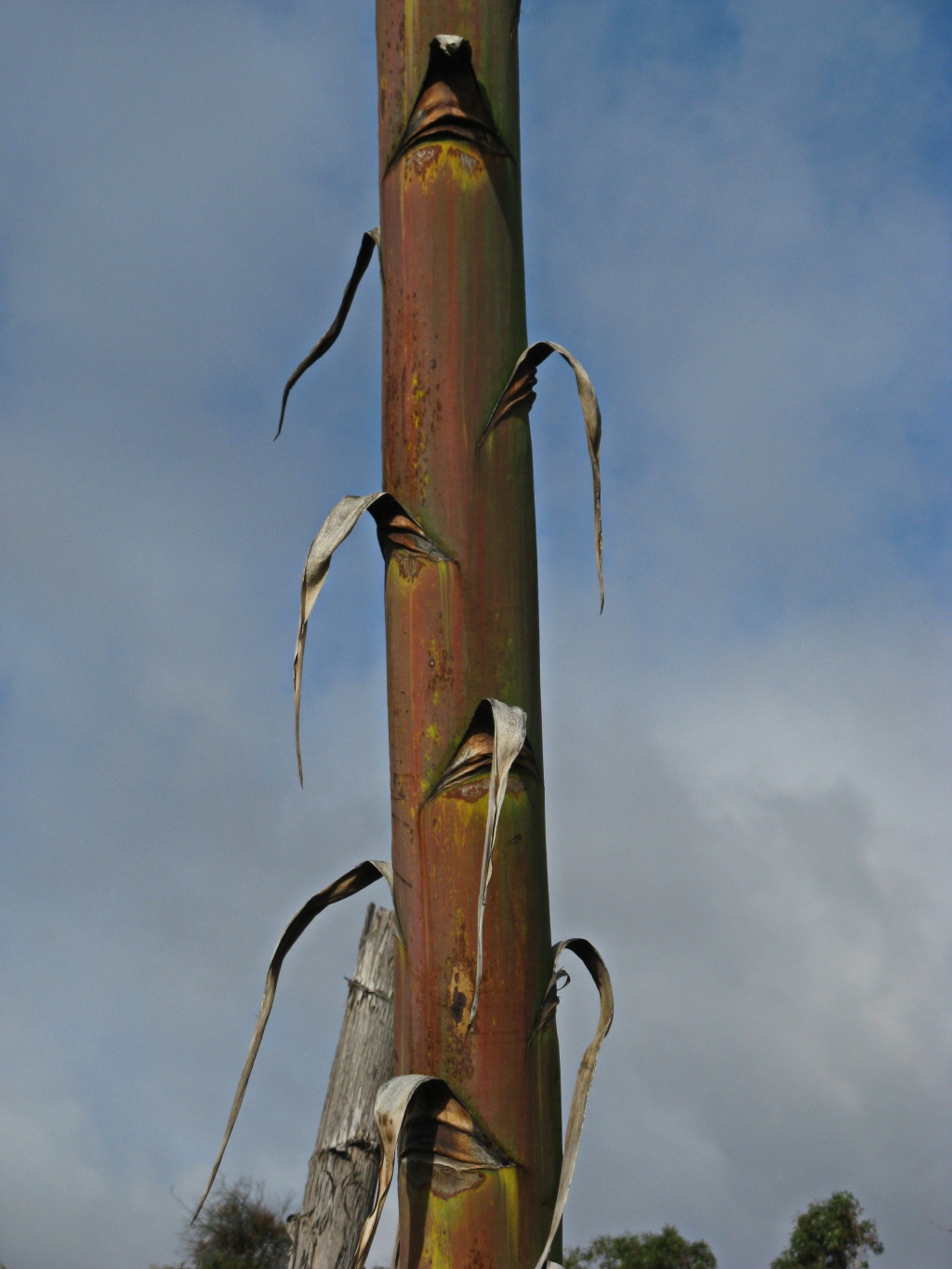Agave
Large, stout, succulent, spinescent herbs. Roots tough, fibrous. Leaves spine-tipped, usually also with marginal spines. Inflorescence bracteate, scapose, spicate or racemose, often arborescent, usually branched and many-flowered. Flowers bisexual, exceeding the subtending bracts; sepals and petals united into a floral tube; stamens 6, exserted, epipetalous or basally inserted, anthers versatile; ovary inferior; style elongate, filiform, stigma 3-lobed. Fruit a loculicidal capsule; seeds black, shiny, flattened.
About 150 species, mostly in Central and southern North America, widely cultivated as ornamentals and for fibre. Naturalized in many warm-temperate parts of the world with Mediterranean climates; 3 naturalised in Australia, 1 in Victoria.
Conran, J.G.; Walsh, N.G. (1994). Agavaceae. In: Walsh, N.G.; Entwisle, T.J., Flora of Victoria Vol. 2, Ferns and Allied Plants, Conifers and Monocotyledons, pp. 718–720. Inkata Press, Melbourne.
 Spinning
Spinning



